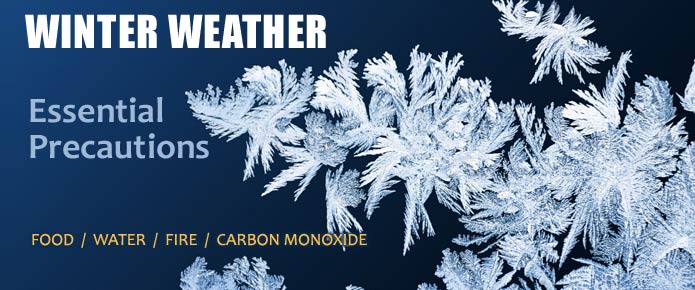
Make arrangements for your pets as part of your household disaster planning. If you must evacuate your home, it's always best to take your pets with you.
For health and space reasons, pets are allowed only in selected public emergency shelters. Plan ahead to ensure the best care for your pets.
- More information on pet preparedness READY.GOV
Before a disaster or emergency
Contact your local animal shelter, humane society, veterinarian or emergency management office for information on caring for pets in an emergency. Find out if there will be any shelters set-up to take pets in an emergency. Also, see if your veterinarian will accept your pet in an emergency.
Decide on safe locations in your house where you could leave your pet in an emergency.
- Consider easy to clean areas such as utility areas or bathrooms and rooms with access to a supply of fresh water.
- Avoid choosing rooms with hazards such as windows, hanging plants or pictures in large frames.
- In case of flooding, the location should have access to high counters that pets can escape to.
- Set up two separate locations if you have dogs and cats.
Buy a pet carrier that allows your pet to stand up and turn around inside.
- Train your pet to become comfortable with the carrier.
- Use a variety of training methods such as feeding it in the carrier or placing a favorite toy or blanket inside.
If your pet is on medication or a special diet, find out from your veterinarian what you should do in case you have to leave it alone for several days.
- Try to get an extra supply of medications.
- Include an identification tag that has your name, address, and phone number.
- If your dog normally wears a chain link "choker" collar, have a leather or nylon collar available if you have to leave him alone for several days.
- Keep your pet's shots current and know where the records are.
- Most kennels require proof of current rabies and distemper vaccinations before accepting a pet.
- Contact motels and hotels in communities outside of your area and find out if they will accept pets in an emergency.
When assembling emergency supplies for the household, include items for pets.
- Extra food (The food should be dry and relatively unappealing to prevent overeating. Store the food in sturdy containers.)
- Kitty litter
- Large capacity self-feeder and water dispenser
- Extra medications
Trained Guide Dogs
In most states, trained guide dogs for the blind, hearing impaired or handicapped will be allowed to stay in emergency shelters with their owners. Check with local emergency management officials for more information.
During an emergency
Bring your pets inside immediately. Animals have instincts about severe weather changes and will often isolate themselves if they are afraid. Bringing them inside early can stop them from running away. Never leave a pet outside or tied up during a storm.
If you evacuate and have to leave your pet at home, prepare a safe location for it:
- Leave familiar items such as the pet's normal bedding and favorite toys.
- Leave a two- or three-day supply of dry food, even if it's not the pet's usual food.
- The food should not be moistened because it may turn rancid or sour.
- Leave the food in a sturdy container that the pet cannot overturn.
- Leave the water in a sturdy, no-spill container.
- If possible, open a faucet slightly and let the water drip into a big container.
- Large dogs may be able to obtain fresh water from a partially filled bathtub.
- Replace a chain link "choker" collar with a leather or nylon collar.
- Make sure the collar has tags and identification.
- Separate dogs and cats.
- Even if your dogs and cats normally get along, the anxiety of an emergency situation can cause pets to act irrationally.
- Keep small pets away from cats and dogs.
- If you evacuate and plan to take your pets, remember to bring your pet's medical records and medicines with your emergency supplies.
- Make special arrangements that allow pet birds to eat daily. Birds must eat daily to survive.
- In an emergency, you may have to leave your birds behind.
- Talk with your veterinarian or local pet store about special food dispensers that regulate the amount of food a bird is given.
- Make sure that the bird is caged and the cage is covered by a thin cloth or sheet to provide security and filtered light.
After an emergency
If after a disaster you have to leave town, take your pets with you. Pets are unlikely to survive on their own.
In the first few days after the disaster, leash your pets when they go outside. Always maintain close contact. Familiar scents and landmarks may be altered and your pet may become confused and lost.
Also, snakes and other dangerous animals may be brought into the area with flood water. Downed power lines are a hazard. The behavior of your pets may change after an emergency. Normally quiet and friendly pets may become aggressive or defensive. Watch animals closely. Leash dogs and place them in a fenced yard with access to shelter and water.

